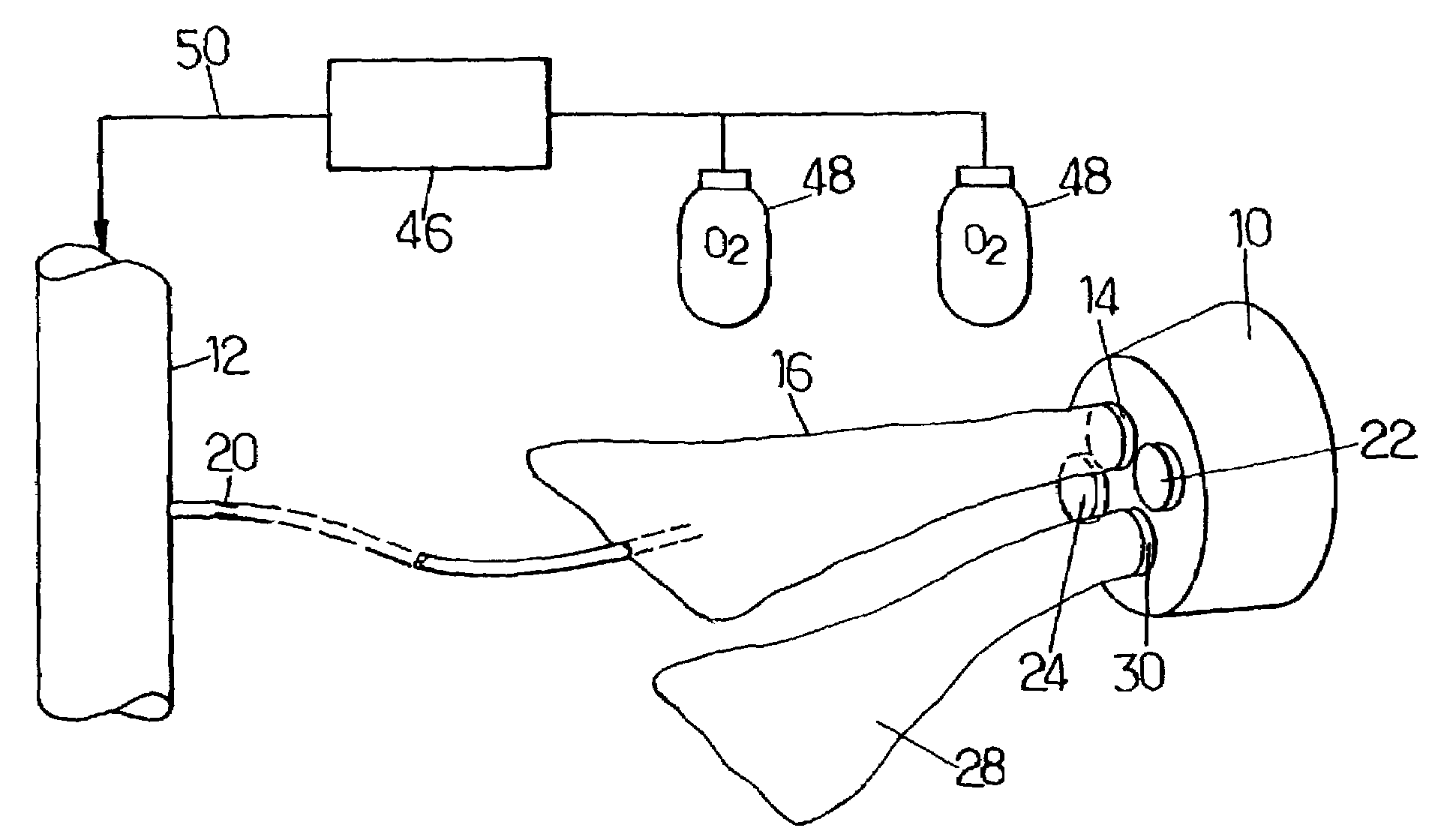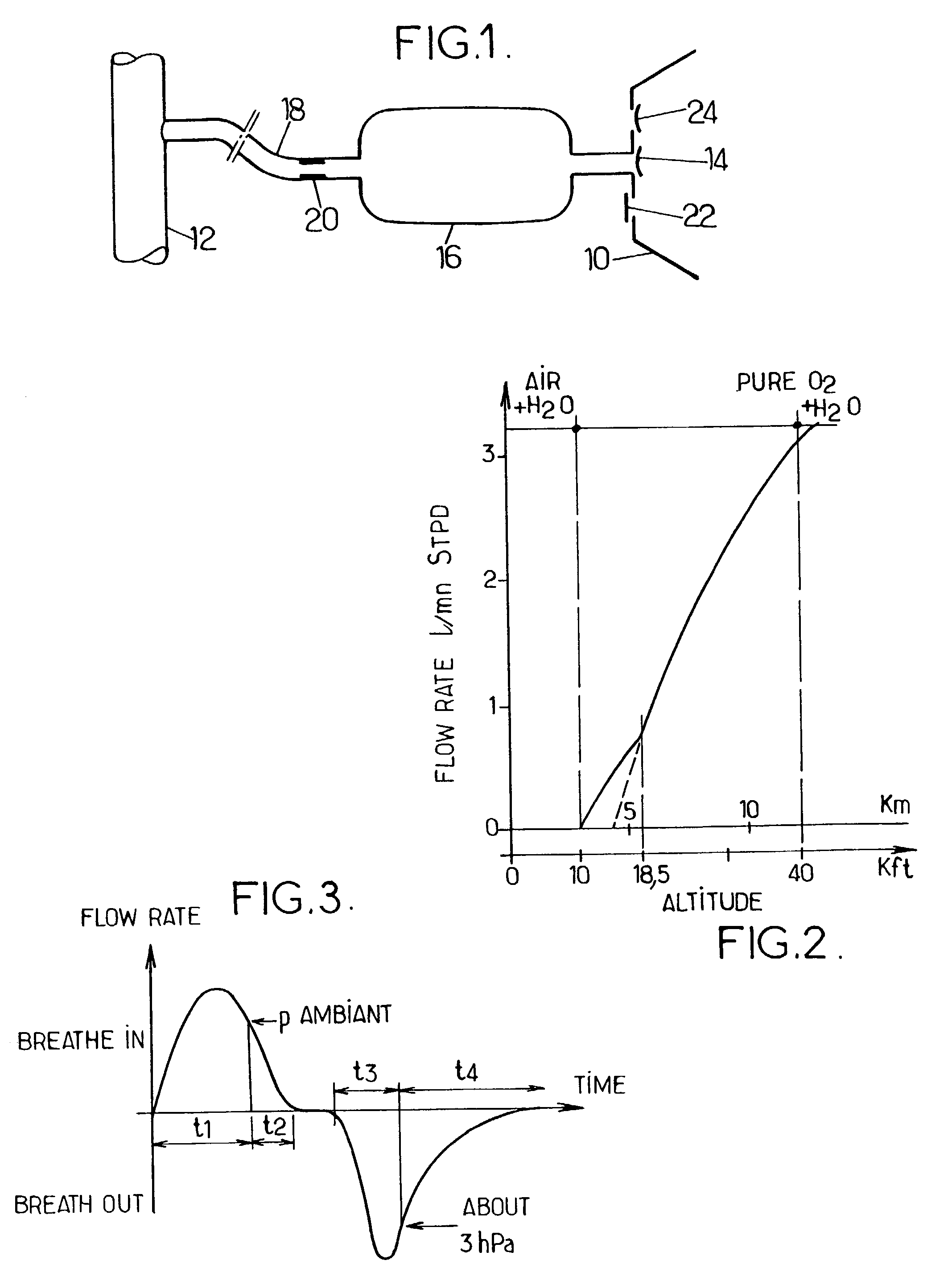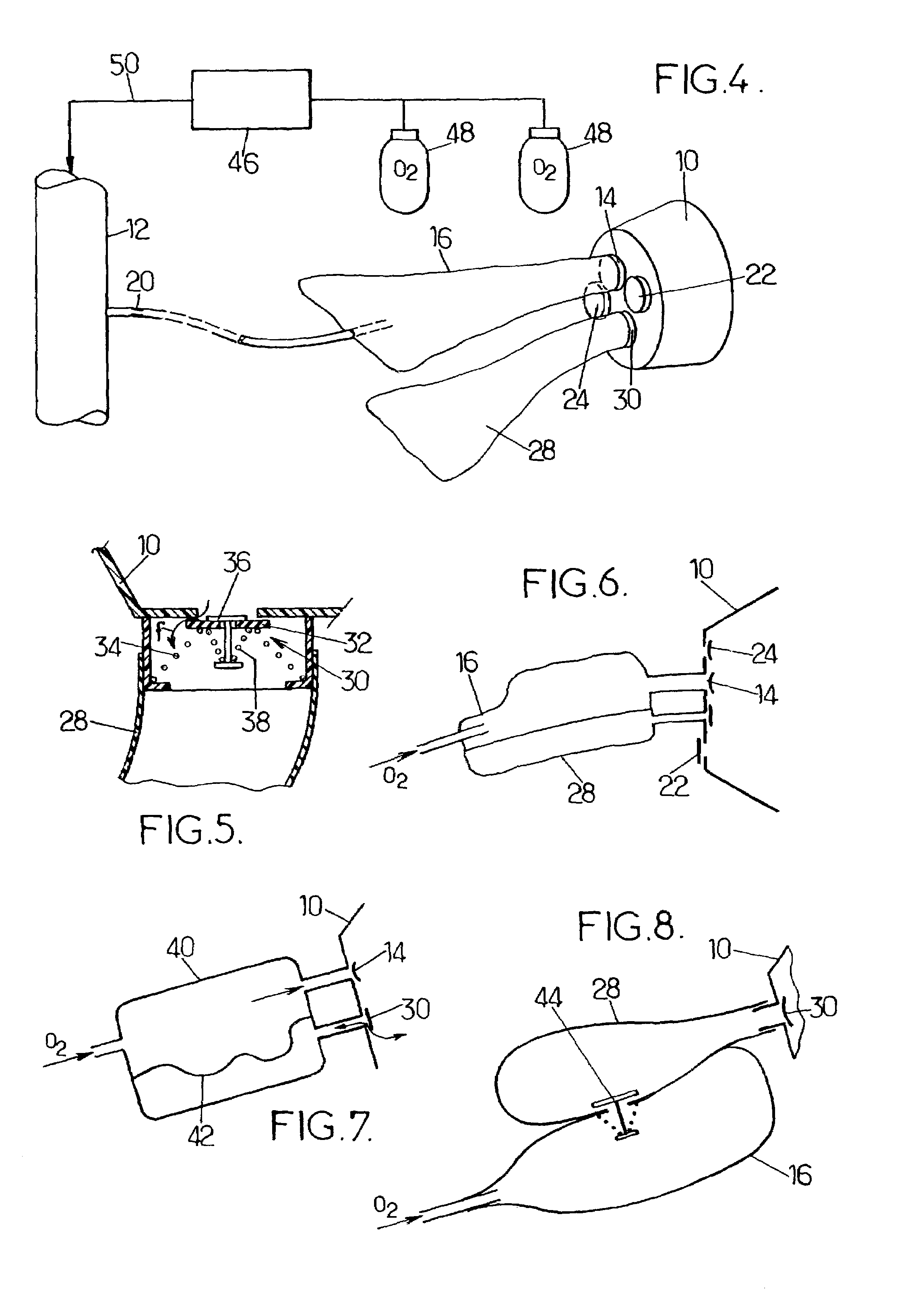Method and apparatus for protecting the passengers of an airplane against hypoxia
a technology for airplane passengers and passengers, applied in the direction of air-treatment apparatus arrangements, aircraft components, life-saving devices, etc., can solve problems such as physiological difficulties
- Summary
- Abstract
- Description
- Claims
- Application Information
AI Technical Summary
Benefits of technology
Problems solved by technology
Method used
Image
Examples
Embodiment Construction
[0031]To achieve the desired result, the invention makes use of the result of the inventors analysis of the breathing cycle which shows that the gases breathed out present a varying partial pressure of carbon dioxide. To show up the essential elements more clearly, there follows a brief summary of the physiology of breathing and an analysis of the consequences thereof.
[0032]The respiratory tract of the human being comprises pulmonary alveoli, alveolar ducts, bronchi, the trachea, and the airways of the upper respiratory tract. Only the alveoli and the terminal portions of the alveolar ducts contribute to gas exchange. The fraction of the volume breathed in which remains in the other portions of the respiratory tract at the end of breathing in remains in those other portions of the respiratory tract and is merely expelled to the outside without any change to its composition at the beginning of the following expiration. All of this portion which does not contribute to gas exchange is ...
PUM
 Login to View More
Login to View More Abstract
Description
Claims
Application Information
 Login to View More
Login to View More - R&D
- Intellectual Property
- Life Sciences
- Materials
- Tech Scout
- Unparalleled Data Quality
- Higher Quality Content
- 60% Fewer Hallucinations
Browse by: Latest US Patents, China's latest patents, Technical Efficacy Thesaurus, Application Domain, Technology Topic, Popular Technical Reports.
© 2025 PatSnap. All rights reserved.Legal|Privacy policy|Modern Slavery Act Transparency Statement|Sitemap|About US| Contact US: help@patsnap.com



